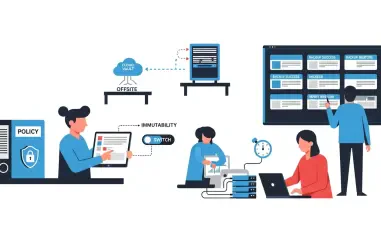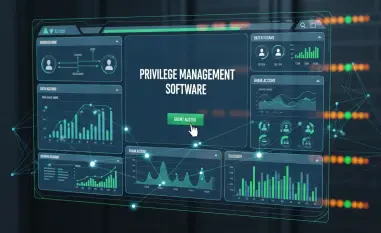How secure do you feel in today’s digital world, where cyber threats are relentless and ever-evolving? The latest release from Microsoft paints a vivid picture of vulnerabilities that permeate our digital environments, posing a question of paramount importance. With over 130 vulnerabilities addressed in its July patch, Microsoft’s intriguing intervention proposes an essential upgrade to fortify defenses against cyber intrusions.
Urgency in the Cybersecurity Arena
In a digital landscape fraught with unseen dangers, standing still is akin to falling behind. As cyber threats grow in sophistication and frequency, the global urgency to safeguard digital assets intensifies. Recent high-profile data breaches underscore the importance of not merely reacting but proactively updating software systems to stem the tide of intrusions. Microsoft’s recent patch emerges as a critical player in this unending race against cybercrime. By effectively addressing vulnerabilities swiftly, it sets a vital example for how to counteract potential breaches.
Dissecting the July Patch’s Impact
Critical vulnerabilities tackled in Microsoft’s comprehensive July update include the SQL Server bug identified as CVE-2025-49719. This particular flaw relates to improper input validation, which, though not exploited yet, poses a potential resource target unless remedied. Another area of focus includes critical patches for remote code execution (RCE) vulnerabilities. These encompass flaws within the SPNEGO Extended Negotiation Security Mechanism, SharePoint, and the Kerberos Key Distribution Center proxy service.
Moreover, updates within the Office suite aim to resolve detrimental problems such as use-after-free and out-of-bounds read vulnerabilities, while the CVE-2025-49724 flaw in the Windows Connected Devices Platform Service delineates a real-world risk requiring crafted traffic and user actions for exploitation. Such a robust patching strategy demonstrates Microsoft’s commitment to extensive security improvements across its services.
Expert Insights into Microsoft’s Security Strategy
Expert perspectives shed light on the significance of Microsoft’s initiatives, emphasizing the need for timely updates. Cybersecurity analysts laud the company for its swift actions, which underscore its proactive stance in an era dominated by digital threats. Microsoft, through its statements, ardently advises users to install the patch promptly, reflecting its broader security strategy aimed at risk mitigation. Real-world scenarios illustrate instances where timely patch applications have averted potential cyber disasters, showcasing the tangible benefits of keeping systems updated.
Actions for Building a Secure Post-Patch Environment
Maximizing security begins with adopting straightforward practices. Enabling automatic updates ensures that patches seamlessly integrate into daily operations without impeding workflows. For those preferring manual applications, a systematic approach simplifies securing critical services. Users can solidify their digital environments by establishing routines that prioritize up-to-date software, supported by measures such as regular security audits. By doing so, individuals and organizations take on a proactive role in fortifying defenses, effectively reducing vulnerabilities.
To conclude, Microsoft’s July patch served as a pivotal line of defense in an increasingly volatile digital environment. By addressing over 130 vulnerabilities, the patch aimed to preempt potential threats, creating a more secure computing atmosphere. As threats evolve and become more sophisticated, the importance of regular updates and vigilance cannot be overstated. Looking ahead, maintaining robust cybersecurity measures will remain a decisive factor for sustainable and safe digital practices. This patch reminded us of the critical nature of updates and their role in our intertwined digital futures.













